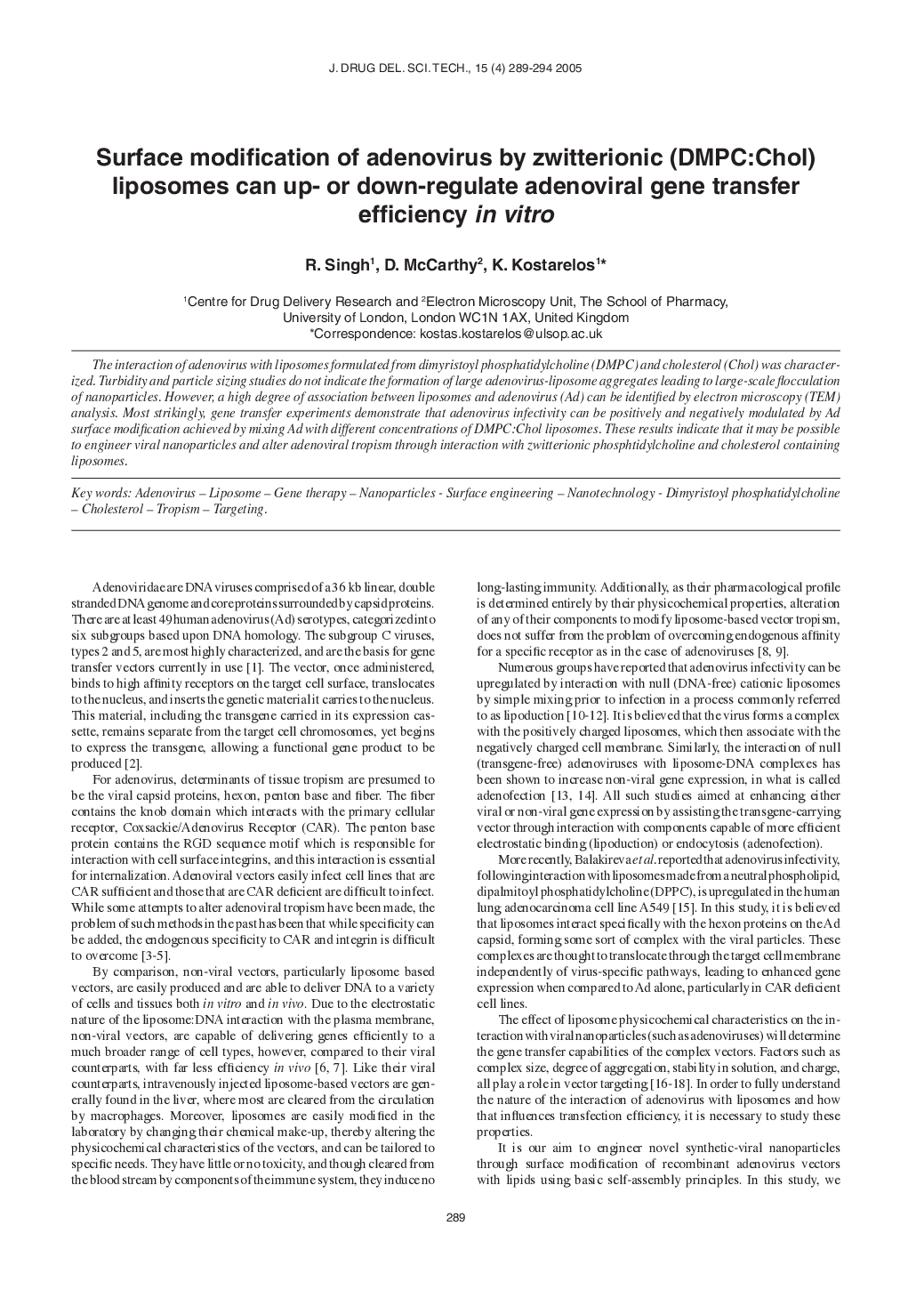| Article ID | Journal | Published Year | Pages | File Type |
|---|---|---|---|---|
| 8994246 | Journal of Drug Delivery Science and Technology | 2005 | 6 Pages |
Abstract
The interaction of adenovirus with liposomes formulated from dimyristoyl phosphatidylcholine (DMPC) and cholesterol (Chol) was characterized. Turbidity and particle sizing studies do not indicate the formation of large adenovirus-liposome aggregates leading to large-scale flocculation of nanoparticles. However, a high degree of association between liposomes and adenovirus (Ad) can be identified by electron microscopy (TEM) analysis. Most strikingly, gene transfer experiments demonstrate that adenovirus infectivity can be positively and negatively modulated by Ad surface modification achieved by mixing Ad with different concentrations of DMPC:Chol liposomes. These results indicate that it may be possible to engineer viral nanoparticles and alter adenoviral tropism through interaction with zwitterionic phosphtidylcholine and cholesterol containing liposomes.
Keywords
Related Topics
Health Sciences
Pharmacology, Toxicology and Pharmaceutical Science
Drug Discovery
Authors
R. Singh, D. McCarthy, K. Kostarelos,
